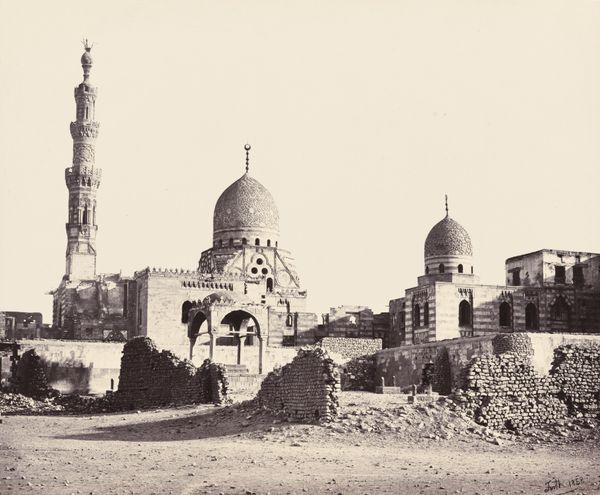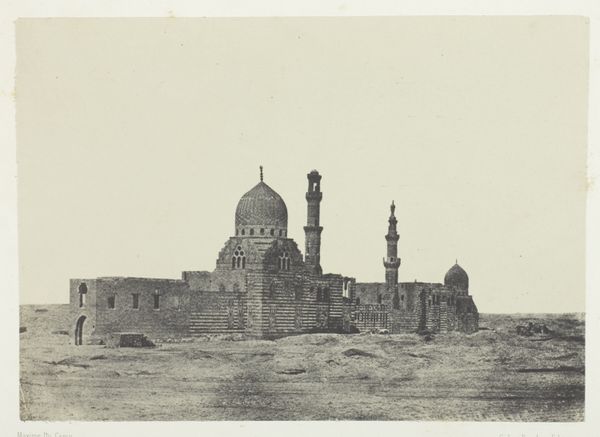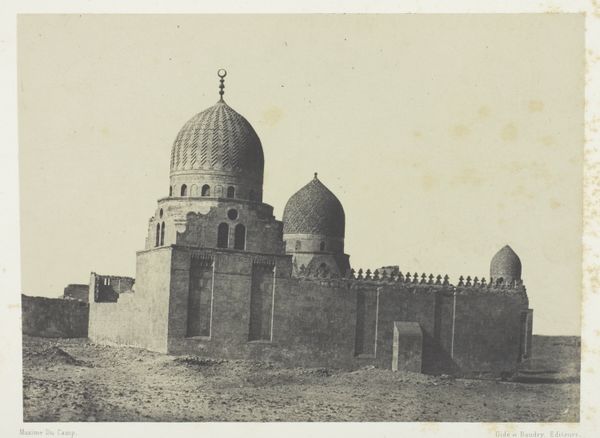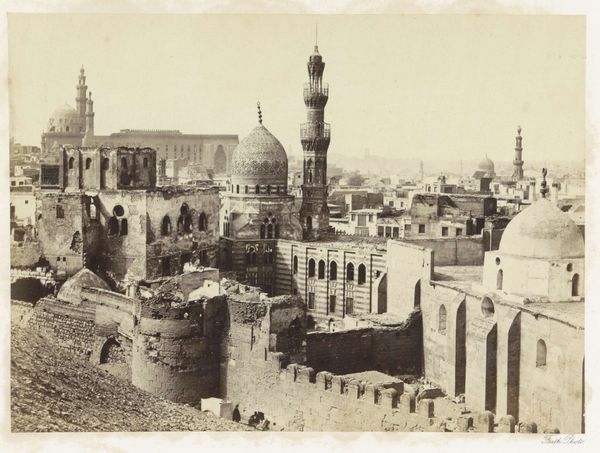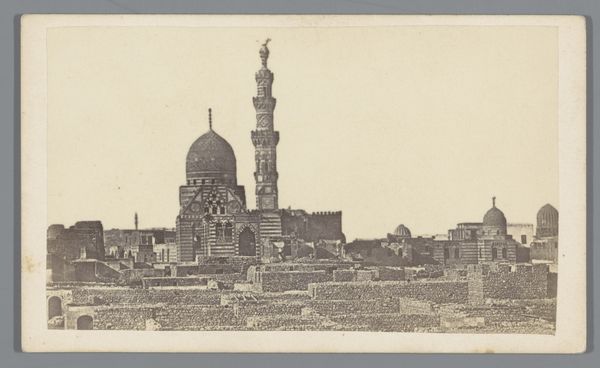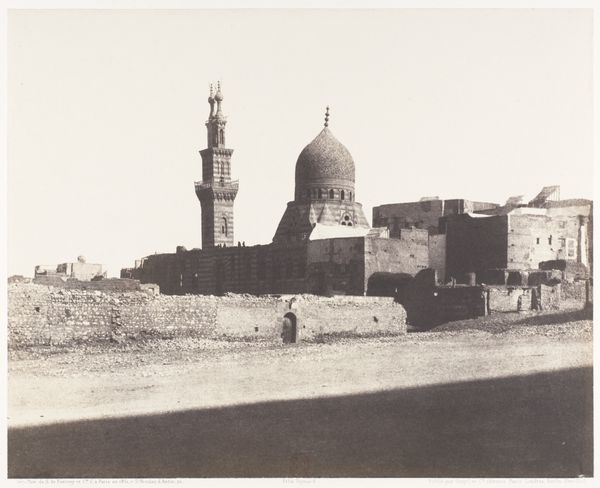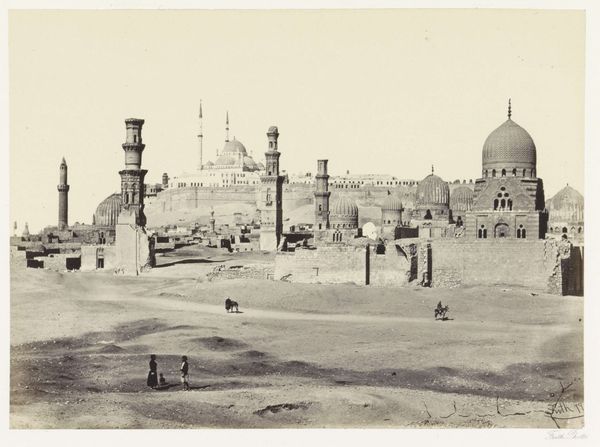
Gezicht op de moskee en het mausoleum van sultan al-Ashraf Qaitbey te Caïro before 1862
0:00
0:00
francisfrith
Rijksmuseum
photography, albumen-print
#
landscape
#
archive photography
#
photography
#
historical photography
#
cityscape
#
islamic-art
#
albumen-print
Dimensions: height 168 mm, width 217 mm
Copyright: Rijks Museum: Open Domain
Editor: This is Francis Frith's photograph, "View of the Mosque and Mausoleum of Sultan al-Ashraf Qaitbey in Cairo," taken before 1862. It's an albumen print, and I’m immediately struck by how much of the foreground is crumbling ruins. What aspects of the image capture your attention? Curator: The albumen print process itself is paramount here. Consider the labour involved in preparing the photographic plates, transporting the equipment to Cairo, and enduring the harsh climate. The resulting image, sepia-toned and detailed, becomes a commodity, fueling European consumption of the 'Orient'. Frith, after all, wasn’t simply an artist; he was a businessman. Editor: That makes sense. It's easy to see it now as a historical document, forgetting the actual making of it. Curator: Precisely! How does the composition—the positioning of the mosque against the ruins— contribute to this reading? It is deliberately constructed. Editor: The contrast is sharp. The decaying structures in the foreground draw your eye, making the pristine architecture in the distance almost like a product, showcased against evidence of entropy and, perhaps, the perceived 'decline' of the region. It highlights the material contrast of preservation and decay. Curator: And what does this suggest about the intended audience and their perception of value? Was Frith merely capturing a scene, or actively shaping a narrative through material presentation and strategic framing? Editor: That's really thought-provoking. The photograph's not just documenting; it’s participating in a system. I hadn't considered the Western gaze commercializing a place through image-making. Thank you! Curator: Indeed! Seeing beyond the picturesque and understanding the mechanics of its production provides a far richer context. A lens for material evaluation reframes the picture.
Comments
No comments
Be the first to comment and join the conversation on the ultimate creative platform.
